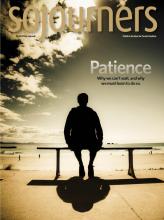THE BRIGHT LIGHT of a full moon cast long shadows on the snow as the firefighters walked up to my home. It was 2:30 a.m., and they tramped single file through the narrow trench I had dug, the exact width of a single snow-shovel blade. (I’m familiar with my sidewalk. I know what it looks like, and felt no need to uncover all of it from the two feet of snow that fell in late January. It was called “snowzilla” or “snowmaggedon,” but I preferred to identify this monster snow as a “snonster.” But that sounds like a head cold, and it never really caught on.)
The firefighters were responding to a call I made after awakening to the strong odor of burning. It smelled like leftover barbecue, which is an utter impossibility in my household because when we have barbecue, we eat it greedily while emitting animal-like growls to warn away other family members, then lick the empty plates clean in a state of giddy delirium. There are never leftovers.
(Editor’s note: Okay, we get it. It wasn’t barbecue.)
I rushed outside to see if a nearby home was on fire, and I saw nothing. But the smell was still strong, so I felt I had to notify the authorities. Figuring my editor was still asleep, I dialed 911 instead.
Read the Full Article

